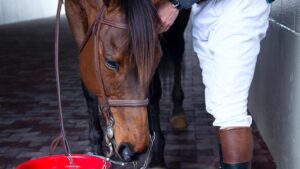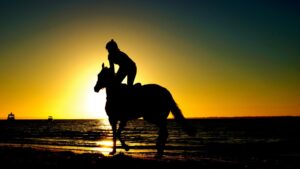From the graceful elegance of English riding to the rugged, daring maneuvers of Western riding, the world of equestrian disciplines offers a diverse array of styles for riders to explore. Each discipline carries its own unique traditions, equipment, and techniques, creating a rich tapestry of riding styles that cater to every rider’s preferences and skills. Whether you prefer the precision and finesse of dressage or the thrill of barrel racing, there is a riding style out there waiting for you to dive in and discover. Let’s take a closer look at the distinct characteristics of English and Western riding, and see how each style brings its own flavor to the equestrian world.
Exploring the Elegance of English Riding
English riding is known for its elegance, precision, and graceful movements. The rider and horse work together in harmony to execute various maneuvers with finesse and poise. From the rider’s posture to the horse’s gait, every aspect is carefully crafted to achieve a seamless connection between human and equine.
One of the key elements of English riding is the emphasis on proper form and technique. Riders maintain an upright position, with shoulders back, heels down, and a straight line from shoulder to hip to heel. This not only looks beautiful in the show ring but also enhances communication between rider and horse, leading to better performance and control.
English riding encompasses a variety of disciplines, including dressage, show jumping, and eventing. Each discipline has its own set of rules and skill requirements, but they all share the same foundation of balance, harmony, and elegance. Whether you’re a beginner just starting out or an experienced rider looking to hone your skills, exploring the world of English riding is sure to be a rewarding journey.
Unveiling the Heritage Behind Western Riding
Western riding is steeped in rich heritage, tracing its origins back to the American West. This style of riding was developed by cowboys working on ranches, where practicality and functionality were key. With its deep connection to the cowboy way of life, Western riding reflects a sense of independence, freedom, and rugged charm. Riders in Western saddles sit deep and secure, allowing for comfort during long hours on horseback.
One of the defining features of Western riding is the use of a uniquely designed saddle known for its large, sturdy horn at the front. This horn was originally used for securing ropes when roping cattle during ranch work. Additionally, Western riders often use specialized tack, such as wide stirrups and a loose rein hold, which provide stability and control while working with livestock.
Compared to English riding, which emphasizes precision and finesse in disciplines like dressage and jumping, Western riding focuses on practical skills used in everyday ranch work. The relaxed and natural riding style of Western disciplines like reining and cutting allows riders to connect with their horses on a deeper level, creating a partnership built on trust and mutual respect.
Comparing the Key Differences in Riding Styles
When it comes to horseback riding, there are two main styles that dominate the equestrian world: English and Western. While both styles involve riding horses, they differ significantly in terms of techniques, equipment, and overall vibe.
English Riding:
- Origins in Europe, particularly in the United Kingdom
- Focuses on precision, balance, and finesse
- Uses a close-contact saddle and reins held in both hands
Western Riding:
- Developed in the United States, inspired by the cowboy lifestyle
- Emphasizes comfort, stability, and control
- Utilizes a Western saddle with a horn and reins held in one hand
Finding Your Perfect Match: Choosing Between English and Western Riding
When it comes to choosing between English and Western riding styles, it’s important to consider what aligns best with your goals and preferences as a rider. Both styles have their own unique characteristics and appeal to different types of riders. Here’s a breakdown of the differences between English and Western riding to help you find your perfect match:
English Riding:
- Originated in Europe
- Focuses on precision and finesse
- Uses lighter, smaller saddles
- Emphasizes communication between horse and rider through subtle cues
Western Riding:
- Originated in the American West
- Emphasizes comfort and stability
- Uses larger, heavier saddles with horns
- Focuses on practical skills used for working cattle
Mastering the Art of Horseback Riding: Tips for Success
When it comes to horseback riding, there are several different styles to explore, each with its own unique techniques and challenges. English Riding is known for its elegant and precise movements, focusing on communication between the rider and horse through subtle cues. Riders in this style typically use a close-contact saddle and ride with both hands on the reins.
Western Riding, on the other hand, is more commonly associated with cowboy culture and ranch work. Riders in this style use a larger saddle with a horn at the front, providing additional stability for activities like roping and cutting cattle. Western riders often use one hand on the reins and focus on a relaxed, confident riding posture.
Both English and Western riding styles have their own unique challenges and rewards, so it’s important for riders to explore and experiment with different techniques to find what works best for them. Whether you prefer the precision of English riding or the laid-back feel of Western riding, mastering the art of horseback riding takes time, dedication, and a willingness to learn and grow as a rider.
Final Thoughts
As you can see, the world of horseback riding offers a diverse array of riding styles to suit every rider’s preferences and goals. Whether you prefer the elegance and precision of English riding or the relaxed and laid-back atmosphere of Western riding, there is a style out there waiting for you to explore. So what are you waiting for? Dive into the world of riding styles and discover the joy and fulfillment that comes with connecting with these magnificent animals in your own unique way. Happy riding!



